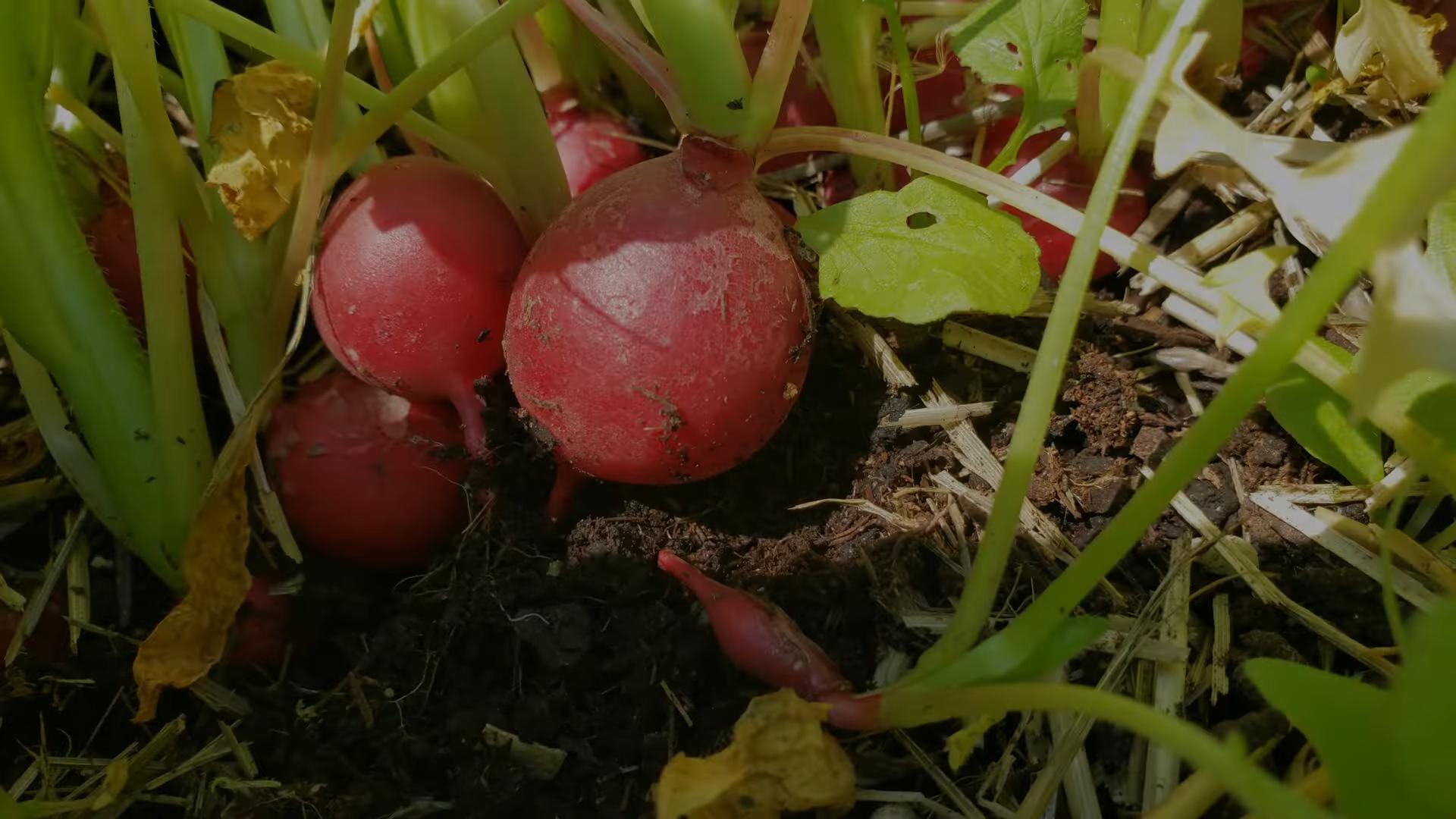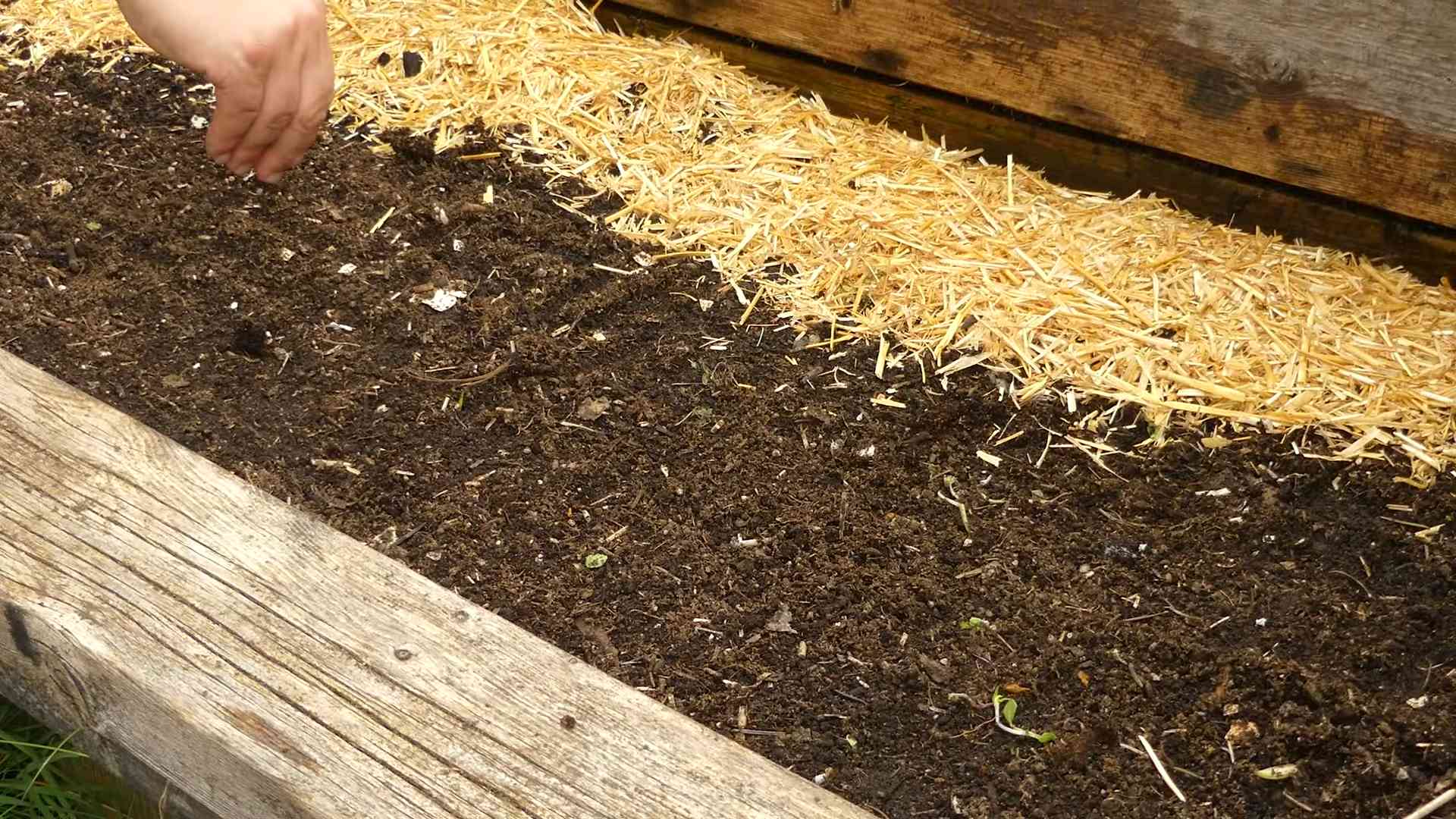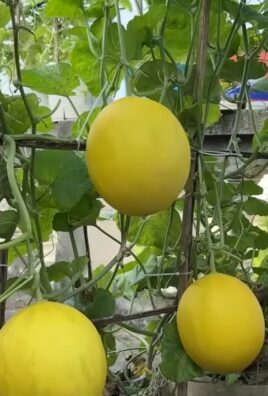Grow Radishes at Home? Absolutely! Imagine plucking crisp, peppery radishes straight from your own backyard, adding a vibrant crunch to your salads and snacks. It’s easier than you think, and this DIY guide is your ticket to radish-growing success, even if you’ve never gardened before.
Radishes have a surprisingly long and fascinating history. Believed to have originated in Asia, they were cultivated in ancient Egypt and Greece, prized for their medicinal properties and culinary versatility. From humble beginnings, they’ve become a global staple, adding a zesty kick to dishes around the world.
But why should you bother to grow radishes at home? Well, store-bought radishes often lack the fresh, intense flavor of homegrown varieties. Plus, gardening is incredibly therapeutic! It’s a chance to connect with nature, de-stress, and enjoy the satisfaction of nurturing something from seed to harvest. In this article, I’ll share simple, effective tricks and hacks that will help you cultivate a thriving radish patch, no matter your space or experience level. Get ready to enjoy the freshest, most flavorful radishes you’ve ever tasted!

Grow Your Own Crunchy Radishes: A Beginner’s Guide
Hey there, fellow gardening enthusiasts! I’m so excited to share my experience with growing radishes at home. These little root veggies are incredibly rewarding because they’re super fast-growing, perfect for impatient gardeners like me! Plus, the peppery bite they add to salads and snacks is just divine. Let’s dive into how you can cultivate your own radish patch, even if you’re a complete newbie.
Choosing the Right Radish Variety
First things first, let’s talk about radish varieties. There’s more to radishes than just the classic red globe! Different types offer varying flavors, sizes, and growing times. Here are a few of my favorites:
* Cherry Belle: These are your classic, round, bright red radishes. They’re quick to mature (about 22 days) and have a mild, crisp flavor. Perfect for beginners!
* French Breakfast: These are elongated, red radishes with a white tip. They have a slightly milder flavor than Cherry Belle and mature in about 25 days.
* Easter Egg: This is a mix of radishes in various colors – red, pink, purple, and white. It’s a fun option for adding visual appeal to your garden and salads. They mature in about 25 days.
* Black Spanish: If you’re looking for something with a bit more kick, try Black Spanish radishes. They have black skin and white flesh, with a pungent, spicy flavor. They take longer to mature (around 50-60 days) and are best grown in the fall.
* Daikon: These are long, white radishes that are commonly used in Asian cuisine. They have a mild, slightly sweet flavor and can grow quite large. They also take longer to mature, around 50-70 days.
Consider your taste preferences and the amount of space you have when choosing your radish variety. For a continuous harvest, I like to plant a mix of varieties with different maturity times.
Preparing Your Radish Bed
Radishes are pretty low-maintenance, but they do need a few things to thrive. Here’s how to prepare the perfect radish bed:
* Sunlight: Radishes need at least 6 hours of sunlight per day. Choose a spot in your garden that gets plenty of sunshine.
* Soil: Radishes prefer loose, well-drained soil that is rich in organic matter. Heavy clay soil can cause the roots to become misshapen and stunted.
* pH: The ideal soil pH for radishes is between 6.0 and 7.0. You can test your soil pH with a soil testing kit, which you can find at most garden centers.
* Amendments: Before planting, amend your soil with compost or well-rotted manure. This will improve drainage, add nutrients, and help the radishes grow quickly. I like to add a generous amount – about 2-3 inches – and work it into the top 6-8 inches of soil.
Planting Your Radish Seeds
Now for the fun part – planting! Radishes are cool-season crops, so the best time to plant them is in early spring or late summer/early fall.
1. Timing is Key: In the spring, plant your radish seeds as soon as the soil can be worked. In the fall, plant them about 4-6 weeks before the first expected frost. I usually start planting in early April for a spring harvest and again in late August for a fall harvest.
2. Direct Sowing: Radishes are best direct-sown, meaning you plant the seeds directly into the ground. They don’t transplant well.
3. Spacing: Sow the seeds about ½ inch deep and 1 inch apart in rows that are 6-12 inches apart. I use my finger to make a shallow trench, sprinkle the seeds in, and then gently cover them with soil.
4. Watering: After planting, water the soil gently but thoroughly. Keep the soil consistently moist until the seeds germinate, which usually takes about 3-7 days.
Caring for Your Radish Plants
Radishes are relatively easy to care for, but here are a few tips to keep them happy and healthy:
* Watering: Radishes need consistent moisture to grow quickly and develop crisp, flavorful roots. Water them regularly, especially during dry spells. Aim for about 1 inch of water per week.
* Thinning: Once the seedlings emerge, thin them to about 2 inches apart. This will give the radishes enough space to grow and prevent overcrowding. I know it feels wasteful to pull out seedlings, but it’s essential for a good harvest.
* Weeding: Keep the radish bed free of weeds. Weeds compete with the radishes for nutrients and water. I like to hand-pull weeds regularly to prevent them from getting out of control.
* Fertilizing: Radishes don’t need a lot of fertilizer, but you can give them a boost with a light feeding of a balanced fertilizer a few weeks after planting. Follow the instructions on the fertilizer package. I prefer using organic fertilizers like compost tea or fish emulsion.
* Pest Control: Radishes are generally pest-resistant, but they can be susceptible to flea beetles and root maggots. Flea beetles chew small holes in the leaves, while root maggots feed on the roots. To prevent flea beetles, you can cover your radish bed with row covers. To prevent root maggots, practice crop rotation and avoid planting radishes in the same spot year after year.
Harvesting Your Radishes
This is the most exciting part! Radishes are ready to harvest when the roots are about 1 inch in diameter. The exact time will depend on the variety you’re growing.
1. Check for Size: Gently brush away the soil around the base of the plant to check the size of the radish.
2. Pull Gently: If the radish is the right size, grasp the leaves near the base of the plant and gently pull it out of the ground.
3. Wash and Store: Wash the radishes thoroughly and trim off the leaves. You can store radishes in the refrigerator for up to a week. I like to store them in a plastic bag with a damp paper towel to keep them crisp.
Troubleshooting Common Radish Problems
Even with the best care, you might encounter a few problems when growing radishes. Here are some common issues and how to fix them:
* Radishes are small and stunted: This can be caused by several factors, including poor soil, lack of water, overcrowding, or hot weather. Make sure your soil is loose and well-drained, water regularly, thin the seedlings to the proper spacing, and plant radishes during the cool season.
* Radishes are cracked: This is usually caused by inconsistent watering. Keep the soil consistently moist, especially during dry spells.
* Radishes are woody or pithy: This can be caused by letting the radishes grow too large or by hot weather. Harvest radishes when they are the right size and plant them during the cool season.
* Radishes are bitter: This can be caused by hot weather or lack of water. Plant radishes during the cool season and water regularly.
* Radishes are infested with pests: Flea beetles and root maggots are the most common pests of radishes. Use row covers to prevent flea beetles and practice crop rotation to prevent root maggots.
Enjoying Your Radish Harvest
Now that you’ve harvested your radishes, it’s time to enjoy them! Here are a few of my favorite ways to eat radishes:
* Raw: Radishes are delicious eaten raw in salads, sandwiches, or as a snack. I love dipping them in hummus or ranch dressing.
* Roasted: Roasting radishes mellows out their flavor and makes them slightly sweet. Toss them with olive oil, salt, and pepper and roast them at 400°F for about 20 minutes.
* Pickled: Pickled radishes are a tangy and crunchy addition to tacos, sandwiches, or salads.
* Sautéed: Sauté radishes with butter and garlic for a simple and flavorful side dish.
* Radish Greens: Don’t throw away the radish greens! They’re edible and nutritious. You can add them to salads, sauté them, or use them in soups and stews.
Succession Planting for Continuous Harvest
To enjoy a continuous harvest of radishes throughout the growing season, practice succession planting. This means planting a new batch of seeds every 1-2 weeks. This will ensure that you always have a supply of fresh radishes. I usually plant a small row of radishes every week or two during the spring and fall.
Saving Radish Seeds (Advanced)
If you want to get really adventurous, you can even save your own radish seeds! This is a bit more involved, but it’s a great way to save money and preserve your favorite

Conclusion
So, there you have it! Growing radishes at home is not only incredibly easy, but it’s also a remarkably rewarding experience. Forget those bland, store-bought radishes that lack that peppery punch. With just a little effort and these simple steps, you can cultivate a vibrant crop of crisp, flavorful radishes right in your own backyard, balcony, or even on a sunny windowsill.
Why is this DIY trick a must-try? Because it puts you in control. You choose the variety, you control the growing conditions, and you harvest at the peak of freshness. The difference in taste between a homegrown radish and one that’s traveled miles to reach your plate is truly astounding. Plus, it’s a fantastic way to introduce children to the joys of gardening and where their food comes from.
But the benefits don’t stop there. Growing your own radishes is also a sustainable choice. You’re reducing your carbon footprint by eliminating transportation and packaging. And you’re ensuring that your radishes are free from harmful pesticides and herbicides. It’s a win-win for you and the environment.
Looking for variations? Absolutely! Experiment with different radish varieties. ‘French Breakfast’ radishes are known for their mild flavor and elongated shape, while ‘Cherry Belle’ radishes are a classic choice for their bright red color and crisp texture. For a spicier kick, try ‘Black Spanish’ radishes. You can also try succession planting, sowing seeds every couple of weeks to ensure a continuous harvest throughout the growing season. Consider companion planting too! Radishes are known to deter pests from other plants, making them excellent companions for carrots, lettuce, and cucumbers.
Don’t be intimidated if you’ve never gardened before. Radishes are incredibly forgiving and quick to mature, making them the perfect crop for beginners. The satisfaction of pulling your first radish from the soil is an unparalleled feeling.
We wholeheartedly encourage you to give this DIY trick a try. You’ll be amazed at how easy and enjoyable it is to grow your own radishes at home. And once you’ve tasted the difference, you’ll never go back to store-bought again.
So, grab some seeds, find a sunny spot, and get ready to experience the joy of homegrown radishes. We’re confident that you’ll be delighted with the results.
And most importantly, we want to hear about your experience! Share your photos, tips, and tricks in the comments below. Let’s build a community of radish-growing enthusiasts and inspire others to discover the joys of homegrown produce. What varieties did you try? What challenges did you face? What successes did you celebrate? Your feedback is invaluable and will help us continue to improve and refine this guide. Happy growing!
Frequently Asked Questions (FAQ)
What is the best time of year to plant radishes?
Radishes are a cool-season crop, meaning they thrive in cooler temperatures. The best time to plant them is in early spring or late summer/early fall. In spring, plant as soon as the soil can be worked, typically 4-6 weeks before the last expected frost. For a fall harvest, plant 4-6 weeks before the first expected frost. Avoid planting during the heat of summer, as high temperatures can cause radishes to become tough and bitter.
How much sunlight do radishes need?
Radishes need at least 6 hours of sunlight per day to grow properly. Choose a location that receives full sun for the best results. If you’re growing radishes indoors, place them near a sunny window or use grow lights to supplement natural light. Insufficient sunlight can lead to leggy growth and smaller radishes.
What kind of soil is best for growing radishes?
Radishes prefer loose, well-drained soil that is rich in organic matter. Amend heavy clay soil with compost or other organic material to improve drainage and aeration. A slightly acidic to neutral soil pH (around 6.0 to 7.0) is ideal. Before planting, loosen the soil to a depth of at least 6 inches to allow the radish roots to grow easily.
How often should I water radishes?
Radishes need consistent moisture to grow quickly and develop a crisp texture. Water regularly, especially during dry periods. Aim to keep the soil consistently moist but not waterlogged. Overwatering can lead to root rot, while underwatering can cause radishes to become tough and bitter. A good rule of thumb is to water deeply once or twice a week, depending on the weather conditions.
How long does it take for radishes to mature?
One of the great things about radishes is that they mature very quickly. Most varieties are ready to harvest in just 3-4 weeks after planting. Check the seed packet for specific maturity times for the variety you are growing. To ensure a continuous harvest, sow seeds every couple of weeks.
How do I know when radishes are ready to harvest?
Radishes are ready to harvest when they reach the size specified on the seed packet. Gently brush away the soil around the base of the plant to check the size of the radish. If it’s the right size, gently pull the radish from the soil. Don’t wait too long to harvest, as radishes can become tough and bitter if left in the ground for too long.
What are some common pests and diseases that affect radishes?
Radishes are generally pest-resistant, but they can be susceptible to certain pests and diseases, including flea beetles, root maggots, and fungal diseases. Flea beetles can chew small holes in the leaves, while root maggots can damage the roots. To prevent these problems, use row covers to protect the plants from pests, and practice crop rotation to prevent soilborne diseases. If you notice any signs of pests or diseases, treat them promptly with appropriate organic pesticides or fungicides.
Can I eat the radish greens?
Yes, radish greens are edible and nutritious! They have a peppery flavor similar to the radish root. You can use them in salads, soups, or stir-fries. Choose young, tender greens for the best flavor. Wash the greens thoroughly before using them.
How do I store radishes after harvesting?
To store radishes, remove the greens and wash the roots thoroughly. Place the radishes in a plastic bag or container with a damp paper towel and store them in the refrigerator. They should last for up to a week.
Can I grow radishes in containers?
Yes, radishes are well-suited for container gardening. Choose a container that is at least 6 inches deep and has drainage holes. Use a well-draining potting mix and follow the same planting and care instructions as for growing radishes in the ground. Container-grown radishes may need to be watered more frequently than those grown in the ground.
What are some good companion plants for radishes?
Radishes are excellent companion plants for carrots, lettuce, spinach, and cucumbers. They can help deter pests from these plants and improve their growth. Avoid planting radishes near hyssop, as it can inhibit their growth.
My radishes are all tops and no bottoms. What went wrong?
This is a common problem when growing radishes. Several factors can contribute to this issue, including:
* **Too much nitrogen:** Excessive nitrogen in the soil can promote leafy growth at the expense of root development. Avoid using high-nitrogen fertilizers.
* **Overcrowding:** If the radishes are planted too close together, they may not have enough room to develop properly. Thin the seedlings to the recommended spacing.
* **Insufficient sunlight:** Radishes need at least 6 hours of sunlight per day to grow properly.
* **Poor soil:** Heavy, compacted soil can restrict root growth. Amend the soil with compost or other organic matter to improve drainage and aeration.
* **High temperatures:** Hot weather can cause radishes to bolt (go to seed) and stop root development. Plant radishes in the spring or fall when temperatures are cooler.
Are there different varieties of radishes?
Yes, there are many different varieties of radishes, each with its own unique characteristics. Some popular varieties include:
* **Cherry Belle:** A classic red radish with a crisp, mild flavor.
* **French Breakfast:** An elongated radish with a mild, slightly sweet flavor.
* **Easter Egg:** A mix of colorful radishes in shades of red, pink, purple, and white.
* **Black Spanish:** A large, black radish with a spicy flavor.
* **Watermelon Radish:** A large, round radish with a green exterior and a pink interior.
Experiment with different varieties to find your favorites.




Leave a Comment